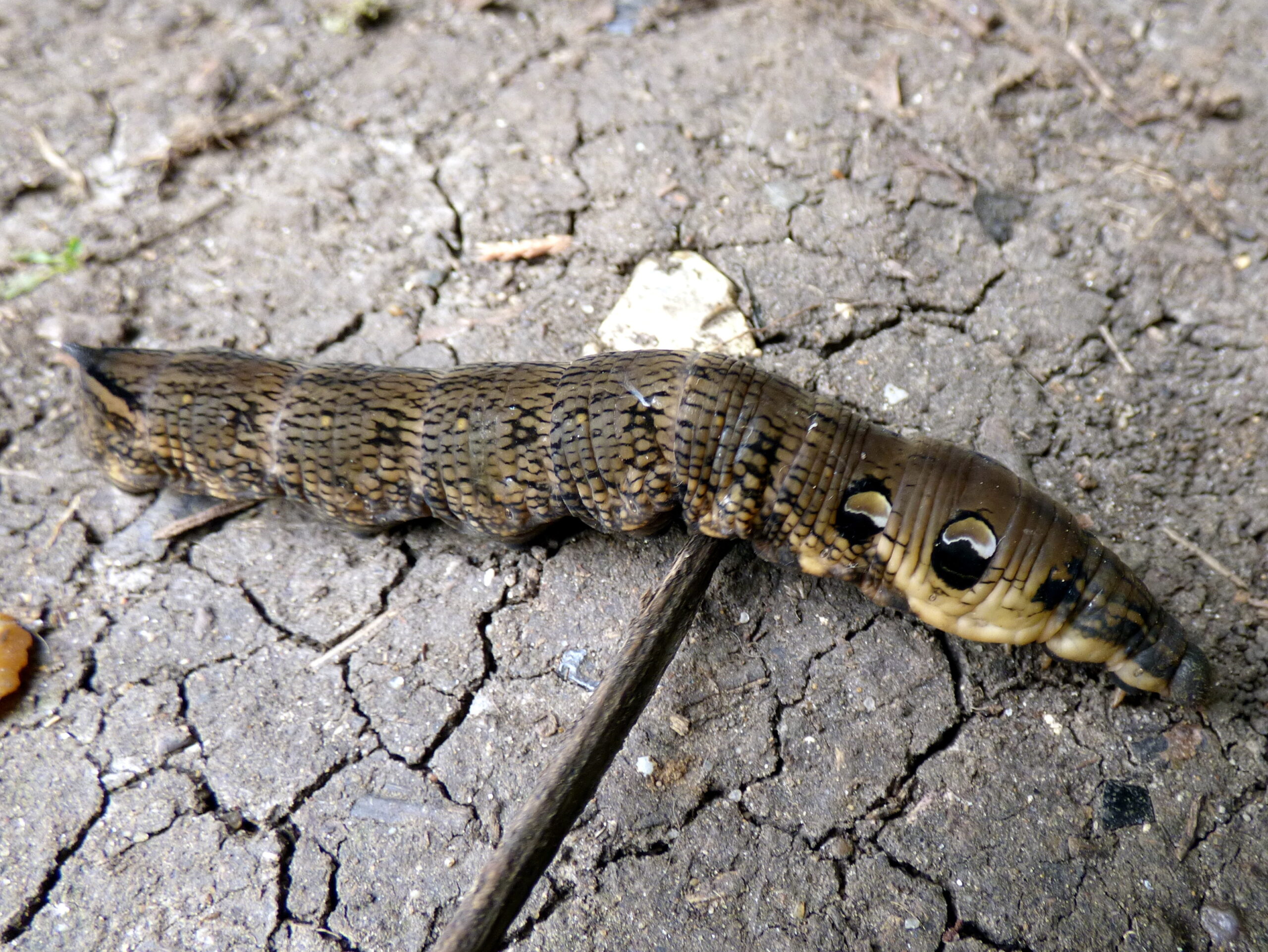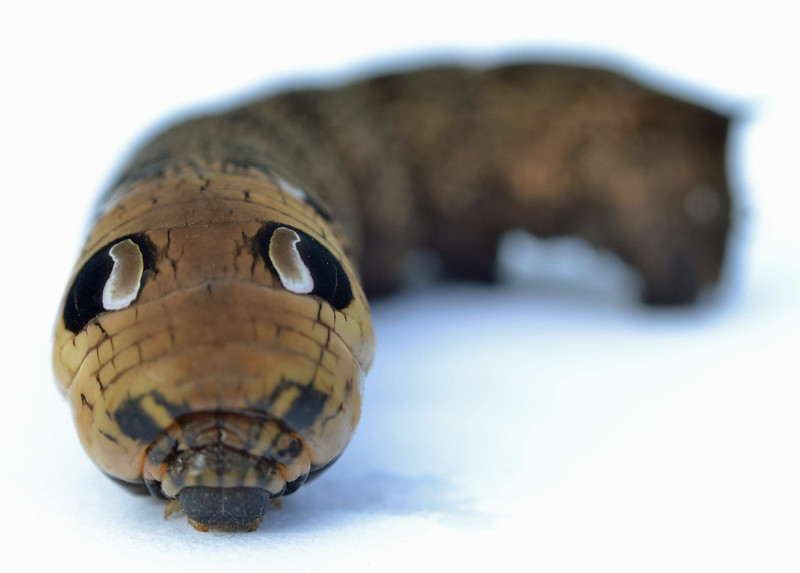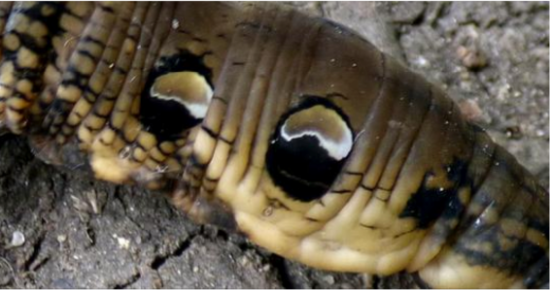In the quaint town of Santa Fe, Argentina, 46-year-old Lujan Eroles stumbled upon a remarkable creature in her garden that left her and her neighbors in awe. Initially mistaking it for a snake, Eroles soon discovered that this 10-centimeter-long creature was actually a masterful imitation – a caterpillar disguised as a serpent.

The encounter was both startling and fascinating, prompting Eroles to share her experience with National Geographic. “I’ve never seen anything like it,” she exclaimed. “It looked just like a snake, but its eyes were so strange.” Fear gave way to curiosity as Eroles and her neighbors gathered to examine the peculiar creature.
A video of the caterpillar posted online quickly went viral, sparking intense debate and speculation about its identity. Experts and enthusiasts weighed in, eventually identifying it as a rare species of moth caterpillar native to Central America, specifically the Elephant Hawk-Moth Caterpillar.

This extraordinary creature has evolved a remarkable defense mechanism – mimicry. Sporting two large “eye markings” behind its head, it deceives predators into perceiving it as larger and more menacing, deterring them from attacking. This ingenious adaptation highlights the complex strategies organisms employ to survive.
Eroles’ chance discovery not only fascinated her community but also shed light on the rich biodiversity in our natural world. This caterpillar’s unique mimicry serves as a reminder of the incredible adaptations that exist in the animal kingdom, waiting to be discovered.
As we marvel at this serpent-like caterpillar, we’re invited to appreciate the intricate web of life and the remarkable strategies that species have developed to thrive. Eroles’ encounter is a testament to the wonders that await us in the unlikeliest of places – even in our own backyards.


